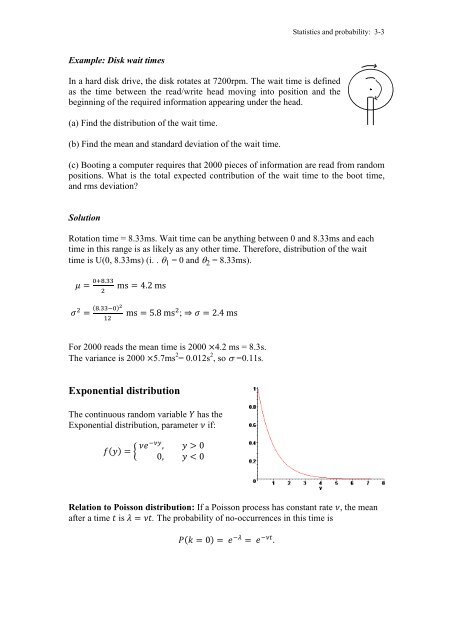3. Continuous Random Variables
3. Continuous Random Variables
3. Continuous Random Variables
Create successful ePaper yourself
Turn your PDF publications into a flip-book with our unique Google optimized e-Paper software.
Example: Disk wait times<br />
Statistics and probability: 3-3<br />
In a hard disk drive, the disk rotates at 7200rpm. The wait time is defined<br />
as the time between the read/write head moving into position and the<br />
beginning of the required information appearing under the head.<br />
(a) Find the distribution of the wait time.<br />
(b) Find the mean and standard deviation of the wait time.<br />
(c) Booting a computer requires that 2000 pieces of information are read from random<br />
positions. What is the total expected contribution of the wait time to the boot time,<br />
and rms deviation?<br />
Solution<br />
Rotation time = 8.33ms. Wait time can be anything between 0 and 8.33ms and each<br />
time in this range is as likely as any other time. Therefore, distribution of the wait<br />
time is U(0, 8.33ms) (i. . � 1 = 0 and � 2 = 8.33ms).<br />
For 2000 reads the mean time is 2000 4.2 ms = 8.3s.<br />
The variance is 2000 5.7ms 2 = 0.012s 2 , so � =0.11s.<br />
Exponential distribution<br />
The continuous random variable has the<br />
Exponential distribution, parameter if:<br />
{<br />
;<br />
Relation to Poisson distribution: If a Poisson process has constant rate , the mean<br />
after a time is . The probability of no-occurrences in this time is



